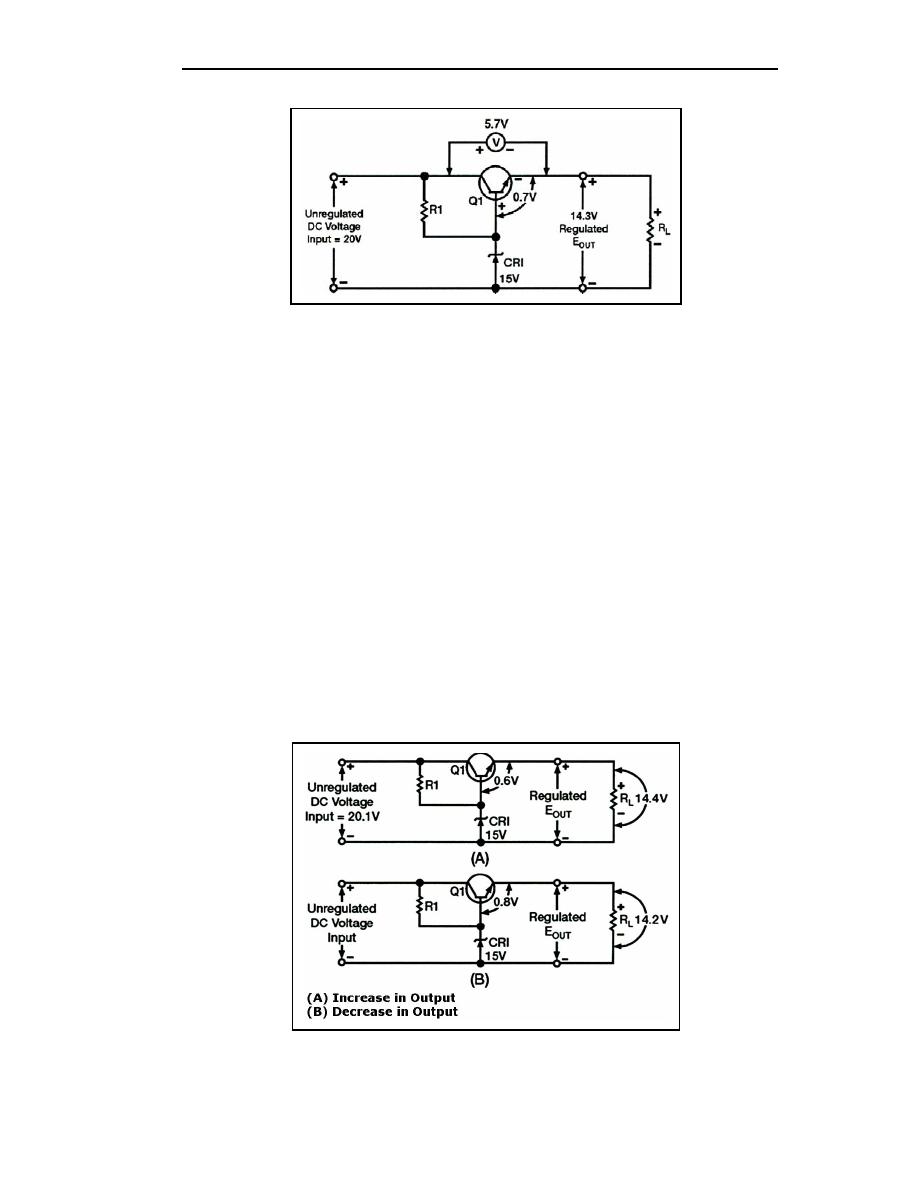
TC 9-62
Figure 4-35. Series Voltage Regulator (With Voltages)
4-109. Figure 4-36, view (A), shows what happens when the input voltage exceeds 20
volts. Notice the input and output voltages of 20.1 and 14.4 volts, respectively. The 14.4
output voltage is a momentary deviation, or variation, from the required regulated output
voltage of 14.3 and is the result of a rise in the input voltage to 20.1 volts. Since the base
voltage of Q1 is held at 15 volts by CR1, the forward bias of Q1 changes to 0.6 volts. Since
this bias voltage is less than the normal 0.7 volts, the resistance of Q1 increases, thereby
increasing the voltage drop across the transistor to 5.8 volts. This voltage drop restores the
output voltage to 14.3 volts. The entire cycle takes only a fraction of a second. Therefore,
the change is not visible on an oscilloscope or readily measurable with other standard test
equipment.
4-110. Figure 4-36, view (B) shows a schematic diagram for the same series voltage
regulator with one significant difference. The output voltage is shown as 14.2 volts instead
of the desired 14.3 volts. In this case, the load has increased causing a greater voltage drop
across RL to 14.2 volts. When the output decreases, the forward bias of Q1 increases to
0.8 volts because Zener diode CR1 maintains the base voltage of Q1 at 15 volts. This
0.8 volts is the difference between the Zener reference voltage of 15 volts and the
momentary output voltage. (15 V - 14.2 V = 0.8 V). At this point, the larger forward bias
on Q1 causes the resistance of Q1 to decrease, thereby causing the voltage drop across Q1
to return to 5.7 volts. This then causes the output voltage to return to 14.3 volts.
Figure 4-36. Series Voltage Regulator (Input and Output Voltages)
4-34
TC 9-62
23 June 2005


 Previous Page
Previous Page
